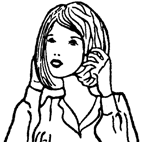 I’m a sucker for feedback synthesis* and therefore I’m very happy with Thomas Ankersmit’s new CD Homage to Dick Raaijmakers. There are two things that stand out after the first listening. Most obviously, there is the utilisation of inner-ear phenomena (the notes advise against using headphones for this piece) that predominate at certain times, creating those satisfying shifts in texture and tone when you move your head around while an otherwise static sound is playing. Almost as striking is the compositional sense at work behind the sounds. This type of music making can so often result in an overwhelming torrent of sounds that never let up, a cataloguing of technical effects or an unvarying slice of sound sculpture. Homage to Dick Raaijmakers flows with an almost romantic feeling for the material as it rises and then ebbs away, the mood passing between tension and relaxation. Repeated listening reveals new details, reflecting the blend of different media put to use here: analogue feedback units and oscillators are combined with contact microphones and tape manipulation. Multiple strands of electronic sounds are often at work, creating subtleties not noticed at first. The psychoacoustic effects arrive in two plateaux during the course of the piece, and even there the pulsing and pitches change from time to time while the listener is head-bopping.
I’m a sucker for feedback synthesis* and therefore I’m very happy with Thomas Ankersmit’s new CD Homage to Dick Raaijmakers. There are two things that stand out after the first listening. Most obviously, there is the utilisation of inner-ear phenomena (the notes advise against using headphones for this piece) that predominate at certain times, creating those satisfying shifts in texture and tone when you move your head around while an otherwise static sound is playing. Almost as striking is the compositional sense at work behind the sounds. This type of music making can so often result in an overwhelming torrent of sounds that never let up, a cataloguing of technical effects or an unvarying slice of sound sculpture. Homage to Dick Raaijmakers flows with an almost romantic feeling for the material as it rises and then ebbs away, the mood passing between tension and relaxation. Repeated listening reveals new details, reflecting the blend of different media put to use here: analogue feedback units and oscillators are combined with contact microphones and tape manipulation. Multiple strands of electronic sounds are often at work, creating subtleties not noticed at first. The psychoacoustic effects arrive in two plateaux during the course of the piece, and even there the pulsing and pitches change from time to time while the listener is head-bopping.
 The whole high-pitched beating frequencies thing made me remember that I wanted to mention a recent CD by Rohan Drape & Anthony Pateras. Ellesmere is apparently the first commercial release by Drape – an event I’ve waited a long time for. I’ve heard him play live, in groups and solo, on several occasions and always been wowed by his technical knowledge, particularly his understanding of software as a means for making music, beyond using it as a tool to achieve a desired outcome. This virtuosity shines through from within the music, not as a flashy surface, so perhaps it should be expected that Ellesmere ignores high-end technology and consists simply of two duets for old electric organs. In the shorter work, Harleian, the two keyboards focus on high pitches, with the differences of intonation and overtones between the two instruments creating plenty of activity to keep the cochlea buzzing. The long piece, St Johns Wood, is in a more sombre register, a slow chorale for organ played as a strange double image, the matched keyboards creating microtonal chords and ghostly harmonics. The otherwise simple organ sound becomes disembodied, without background or perspective the instrument becomes unreal.
The whole high-pitched beating frequencies thing made me remember that I wanted to mention a recent CD by Rohan Drape & Anthony Pateras. Ellesmere is apparently the first commercial release by Drape – an event I’ve waited a long time for. I’ve heard him play live, in groups and solo, on several occasions and always been wowed by his technical knowledge, particularly his understanding of software as a means for making music, beyond using it as a tool to achieve a desired outcome. This virtuosity shines through from within the music, not as a flashy surface, so perhaps it should be expected that Ellesmere ignores high-end technology and consists simply of two duets for old electric organs. In the shorter work, Harleian, the two keyboards focus on high pitches, with the differences of intonation and overtones between the two instruments creating plenty of activity to keep the cochlea buzzing. The long piece, St Johns Wood, is in a more sombre register, a slow chorale for organ played as a strange double image, the matched keyboards creating microtonal chords and ghostly harmonics. The otherwise simple organ sound becomes disembodied, without background or perspective the instrument becomes unreal.
*To the point of using it myself, with both analogue and digital electronics.

[…] it, so much that I forgot to read the sleeve notes or remember what I liked about his last album, Homage to Dick Raaijmakers. Perceptual Geography is a piece Ankersmit has worked on over the past few years, built up from […]
[…] Drape and Anthony Pateras’ earlier work with keyboards and electronics has been discussed here before but finally received its long-awaited follow-up last year. The traces of a mistake, the most simple […]